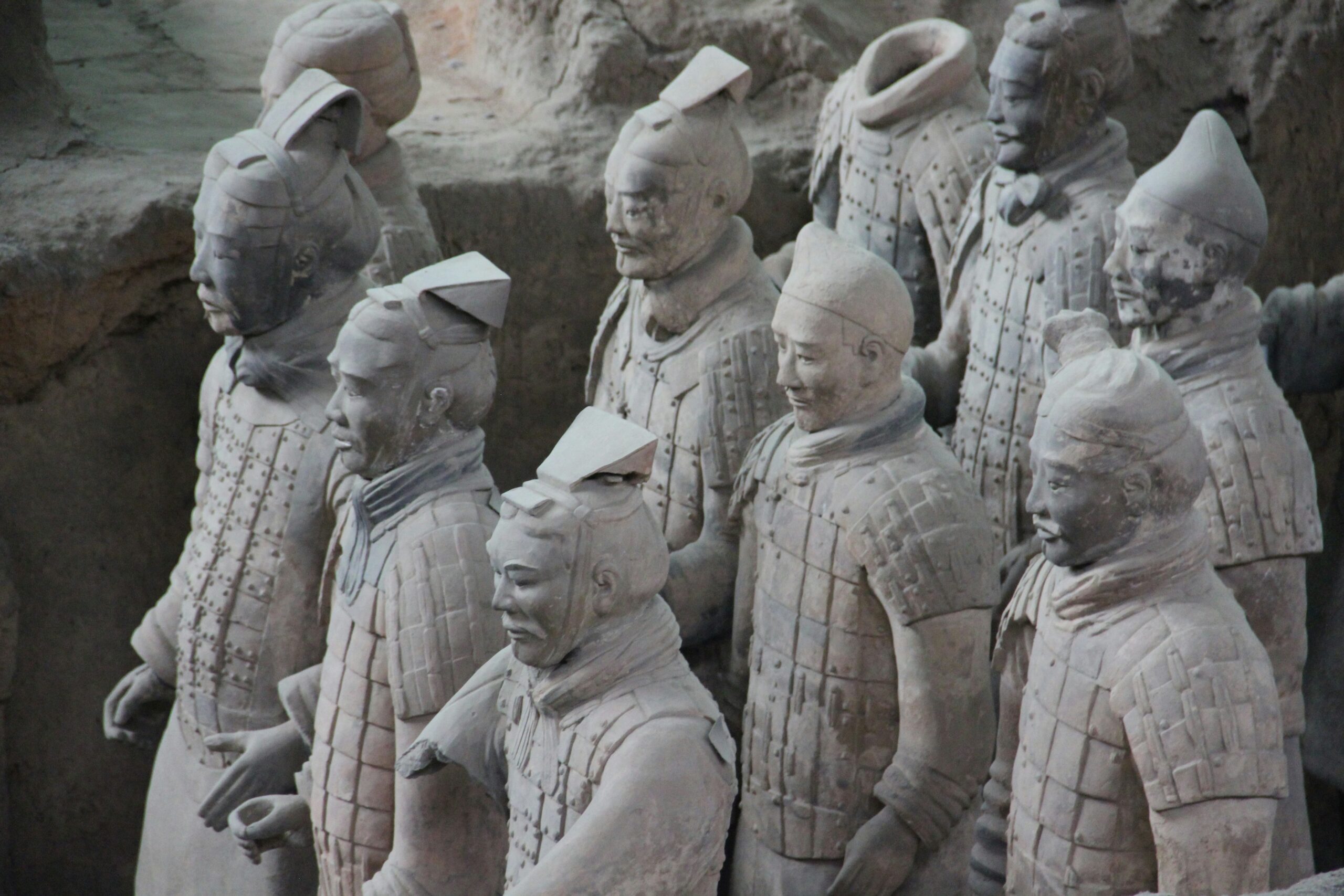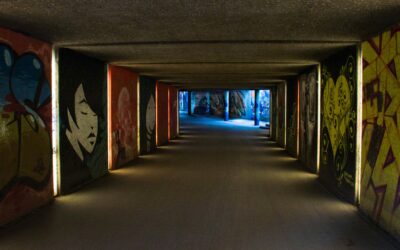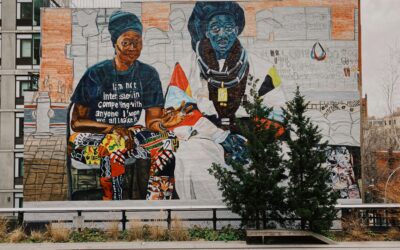The world of East Asian sculpture offers a profound blend of spiritual symbolism, philosophical depth, and refined aesthetics. Unlike the often overt drama of Western statuary or the intricate carvings of Southeast Asia, East Asian sculptures speak in subtle forms, harmonious proportions, and meditative presence. Every curve of a robe, every gesture of a hand, and every tilt of a head reflects an entire worldview rooted in Confucianism, Daoism, and Buddhism—the “Three Teachings” that have deeply shaped East Asian cultures.
Spanning from the terracotta warriors of ancient China to the bronze Buddhas of Korea and the elegant wooden deities of Japan, this article explores how East Asian sculpture serves as both cultural expression and spiritual bridge, guiding us between the earthly and the eternal.
The Philosophical Foundations
To understand East Asian sculpture, one must first grasp the underlying philosophies that shape its form:
Confucianism emphasized harmony, order, and moral rectitude, often inspiring sculptures that represent loyalty, ancestors, and filial piety.
Daoism encouraged flowing forms and natural balance, which influenced sculptures of immortals, sages, and mystical beings.
Buddhism, which arrived from India and became integral in all three countries, inspired the most iconic and spiritually symbolic sculptural works.
This triad of belief systems created a visual culture where sculpture was not merely representational but meditative and metaphysical.
China: Stone and Spirit
Terracotta Army – Earthly Protection for Eternal Life
Perhaps the most famous example of ancient Chinese sculpture is the Terracotta Army, created for Emperor Qin Shi Huang (3rd century BCE). This vast underground army of over 8,000 life-sized soldiers was buried to protect the emperor in the afterlife.
Symbolism: Each figure has unique facial features and attire, representing the emperor’s control over a unified, diverse empire.
Material: Terracotta (baked earth) suggests permanence, while their underground placement evokes the yin-yang relationship between death and life.
Spiritual role: These statues reflect the ancient Chinese belief in immortality and the afterlife as a continuation of political and military order.
Buddhist Sculpture – From Bodhisattvas to the Cosmic Buddha
With the introduction of Mahayana Buddhism around the 1st century CE, Chinese sculpture entered a new phase of spiritual expression. Temples, caves, and grottoes became filled with serene Buddhas, compassionate Bodhisattvas, and protective deities.
The Longmen and Yungang Grottoes:
These massive rock-cut sanctuaries from the 5th to 8th centuries CE display thousands of carved figures.
Mudras (hand gestures) communicate teachings: for example, Dhyana Mudra (meditation) and Varada Mudra (compassion).
Iconography includes lotus thrones, haloed heads, and third eyes, symbolizing divine awareness and transcendence.
Bodhisattva Guanyin, the embodiment of compassion, became increasingly feminized in China, reflecting a unique cultural shift in spiritual ideals.
Daoist Deities and Immortals
In contrast to Buddhism’s celestial calm, Daoist sculptures often depict the Eight Immortals, sages riding clouds, or strange animals with cosmic powers. These reflect Daoism’s focus on spontaneity, longevity, and harmony with nature.
Korea: Serenity in Bronze and Stone
Unified Silla and the Rise of Buddhist Bronze Sculpture
In Korea, sculpture reached its classical form during the Unified Silla period (7th–9th century). One of the most celebrated works is the Seokguram Grotto, home to a seated granite Buddha facing the East Sea.
The Buddha is portrayed with graceful realism, embodying the ideal of seon (Zen) tranquility.
Surrounding figures of Bodhisattvas, Arhats, and heavenly guardians are carved in high relief, symbolizing the cosmic order.
The Gilt-Bronze Tradition
Korean sculptors developed a distinct style of gilt-bronze Buddha statues, such as the “Gilt-bronze Maitreya in Meditation,” housed in the National Museum of Korea.
The figure is seated in the pensive pose (one leg crossed, fingers touching the cheek), reflecting contemplation and the promise of future salvation.
Korean bronze Buddhas are known for their gentle curves, lotus-shaped bases, and a calm, knowing expression—symbolic of internal balance and universal compassion.
Shamanic Roots
Pre-Buddhist Korea had rich shamanistic traditions, evident in sculptures of animal guardians and stone totems (called jangseung), placed at village entrances. These figures were believed to ward off evil spirits and protect the community, showing a long-standing connection between sculpture and everyday life.
Japan: Wood, Spirit, and the Aesthetic of Emptiness
Early Buddhist Influence and the Nara Period
Japan adopted Buddhism from Korea and China in the 6th century, and quickly began developing its own sculptural idioms. The Nara period (710–794) saw the construction of Todai-ji Temple, home to the Great Buddha (Daibutsu) of Nara.
Cast in bronze, the statue stands over 15 meters tall and represents Vairocana, the cosmic Buddha of Mahayana Buddhism.
His open palm and upright posture project universal compassion and enlightenment.
Surrounded by guardian deities and lotus motifs, the statue is an axis mundi—a symbolic center of the universe in Japanese spiritual life.
Heian and Kamakura Periods – Realism and Emotion
Over time, Japanese sculptors moved from abstract stylization to heightened realism and emotional expression, particularly during the Kamakura period (1185–1333).
Sculptors like Unkei and Kaikei created dynamic wooden statues of warriors, monks, and Buddhas.
Nio Guardians—muscular, wrathful figures stationed at temple gates—reflect spiritual protection and the suppression of evil.
Bodhisattvas like Kannon (Avalokiteshvara) were carved in delicate woods, often gilded, signifying both compassion and impermanence.
Zen Buddhism and the Aesthetics of Emptiness
The introduction of Zen Buddhism brought a minimalist approach to art:
Zen monks sculpted simple stone Buddhas, often left weathered by nature, symbolizing impermanence (mujo).
Garden sculptures, such as stone lanterns and water basins, became spiritual as well as decorative, reflecting the Zen value of quiet contemplation.
Here, form becomes space—a visual embodiment of emptiness (sunyata) not as nothingness, but as the infinite potential of existence.
Cross-Cultural Influences and Local Adaptation
While East Asian countries shared many sculptural themes, they also adapted styles to local contexts:
Material choices varied—stone in China, bronze in Korea, and wood in Japan.
Facial features and robes reflected ethnic differences and ideals of beauty.
Integration with landscape is unique to Japan, where sculpture is often placed in dialogue with gardens or nature, making the viewer part of the experience.
Modern Echoes and Artistic Legacy
Today, East Asian sculptural traditions continue to influence both traditional artisans and contemporary artists:
Modern Buddhist sculptors reinterpret ancient forms in metal, glass, and recycled materials.
Public sculptures in East Asia draw from mythological figures and historical heroes, reactivating national memory.
Internationally, East Asian aesthetics influence contemporary minimalism, installation art, and meditative spaces.
Conclusion
Sculpture in East Asia is more than stone, metal, or wood—it is a living philosophy in form. Whether evoking the stillness of meditation or the dynamism of protective wrath, East Asian statues embody a worldview in which material and spirit are not separate, but one.
From the buried soldiers of China to the golden Buddhas of Korea and the quiet guardians of Japanese Zen gardens, East Asian sculpture teaches us to see beyond the surface—to feel the invisible breath within solid form.
As contemporary artists explore the spiritual and symbolic depths of the human experience, the timeless lessons of East Asian sculpture remain a source of profound inspiration.




